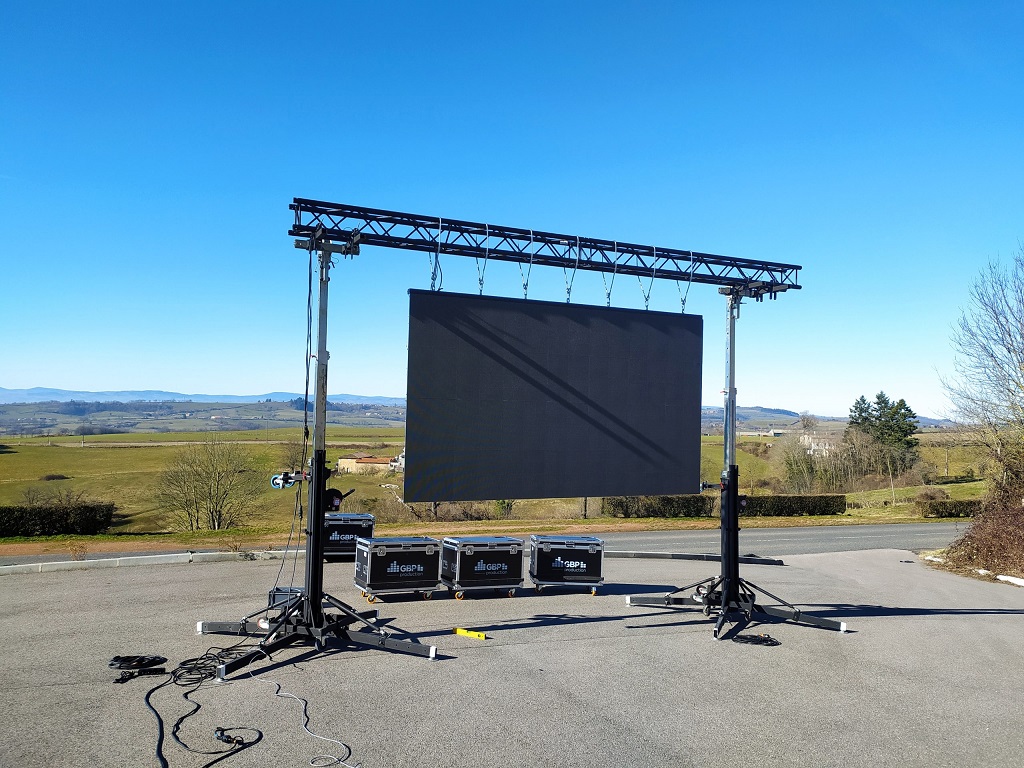When it comes to organizing an event, whether it’s a corporate conference, music festival or trade show, one of the most crucial elements in ensuring visual impact and audience engagement is the choice of LED screen. With the multitude of options available on the market, it can be difficult to determine which LED screen is best suited to your event. This guide aims to provide you with the essential information you need to make the right choice.
Understanding the basics: resolution and size
Screen resolution and size are the first criteria to consider. Resolution, measured in pixels, determines image clarity. The higher the number of pixels, the sharper the image. For large outdoor events, a lower resolution may be acceptable, as the audience will generally be further away from the screen. On the other hand, for indoor events or when the audience is close to the screen, opt for a higher resolution.
The size of the screen should be proportional to the size of your event space and the number of spectators. A screen that’s too small will be hard to see for a large crowd, while one that’s too big in a small space can be overwhelming and difficult to view in its entirety.
Brightness and lighting conditions
LED display brightness is measured in nits. A high-brightness screen is essential for daytime events or well-lit venues. For indoor or evening events, a screen with lower brightness may suffice. It’s important to choose a screen whose brightness can be adjusted according to ambient light conditions, to ensure optimum visual comfort.
Choice of led display type
There are several types of LED screen, each with its own characteristics and advantages. Rigid LED screens are durable and suitable for permanent or long-term installations. Flexible LED displays, on the other hand, are ideal for events requiring rapid installation and flexible configuration, such as curved shapes.
installation and mobility
Consider the screen’s ease of installation and mobility. For events requiring rapid configuration changes, opt for screens that are easy to assemble and dismantle. Some LED screens are designed to be modular, allowing customization to suit the space available.
Durability and reliability
Durability is another key factor, especially for outdoor events exposed to the elements. Make sure the LED display you choose is weatherproof and capable of operating reliably for the duration of your event.
Budgetary considerations
Of course, budget is a crucial aspect. LED screens vary considerably in price, depending on their size, resolution and technology. Determine your budget in advance and look for the best value for money without compromising essential aspects such as image quality and reliability.
After-sales service and support
Finally, consider the support and after-sales services offered by the supplier. Good technical support can make a big difference, especially in the event of unforeseen technical problems during the event.
Environmental impact and energy consumption
One aspect often overlooked when choosing an LED screen is its environmental impact and energy consumption. Event organizers conscious of their ecological footprint should consider LED screens designed to be energy-efficient. These screens consume less energy and can help reduce the event’s carbon footprint. What’s more, some models are made from recycled or recyclable materials, offering a more sustainable option. It’s also important to find out about the supplier’s recycling and waste management policies, especially for large-scale events where the amount of electronic equipment used can be significant.
Interaction and advanced features
In today’s digital world, LED screens are not just display tools; they can also offer interactive features that enrich the experience of participants. Some screens are equipped with touch or augmented reality technologies, enabling viewers to actively engage with the content. Others can integrate social networking features, displaying tweets or live messages. These advanced features can transform a simple screen into an immersive, interactive experience for your audience. When choosing your screen, consider how these technologies can be used to enhance your event and further engage your audience.
Choosing the right LED screen for your event is a decision that requires careful thought and an understanding of the various technical aspects. By taking into account resolution, size, brightness, screen type, ease of installation, durability, budget, and after-sales support, you can select an LED screen that not only meets your specific needs but also enhances the overall experience of your event. With the right LED screen, your event is sure to captivate and engage your audience in a memorable way.
